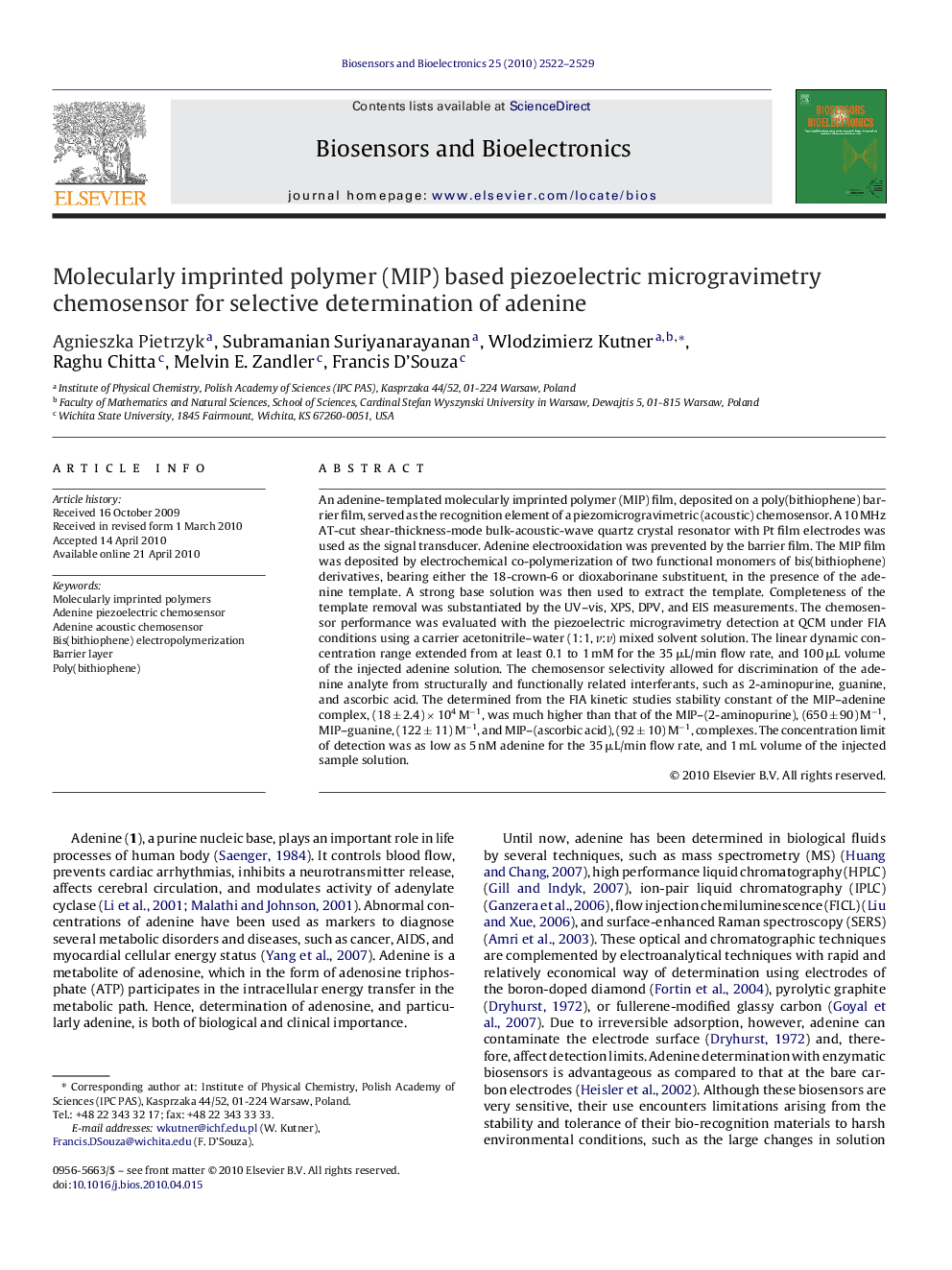| Article ID | Journal | Published Year | Pages | File Type |
|---|---|---|---|---|
| 868975 | Biosensors and Bioelectronics | 2010 | 8 Pages |
An adenine-templated molecularly imprinted polymer (MIP) film, deposited on a poly(bithiophene) barrier film, served as the recognition element of a piezomicrogravimetric (acoustic) chemosensor. A 10 MHz AT-cut shear-thickness-mode bulk-acoustic-wave quartz crystal resonator with Pt film electrodes was used as the signal transducer. Adenine electrooxidation was prevented by the barrier film. The MIP film was deposited by electrochemical co-polymerization of two functional monomers of bis(bithiophene) derivatives, bearing either the 18-crown-6 or dioxaborinane substituent, in the presence of the adenine template. A strong base solution was then used to extract the template. Completeness of the template removal was substantiated by the UV–vis, XPS, DPV, and EIS measurements. The chemosensor performance was evaluated with the piezoelectric microgravimetry detection at QCM under FIA conditions using a carrier acetonitrile–water (1:1, v:v) mixed solvent solution. The linear dynamic concentration range extended from at least 0.1 to 1 mM for the 35 μL/min flow rate, and 100 μL volume of the injected adenine solution. The chemosensor selectivity allowed for discrimination of the adenine analyte from structurally and functionally related interferants, such as 2-aminopurine, guanine, and ascorbic acid. The determined from the FIA kinetic studies stability constant of the MIP–adenine complex, (18 ± 2.4) × 104 M−1, was much higher than that of the MIP–(2-aminopurine), (650 ± 90) M−1, MIP–guanine, (122 ± 11) M−1, and MIP–(ascorbic acid), (92 ± 10) M−1, complexes. The concentration limit of detection was as low as 5 nM adenine for the 35 μL/min flow rate, and 1 mL volume of the injected sample solution.
